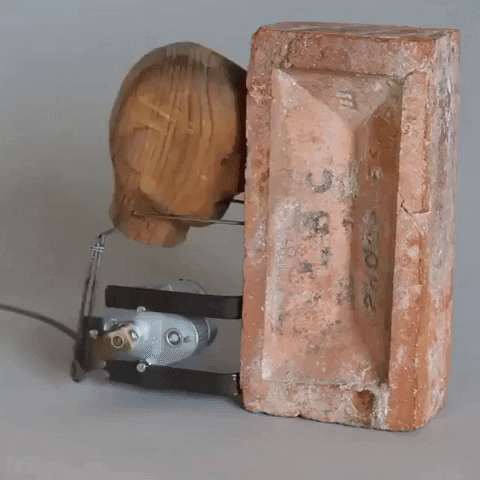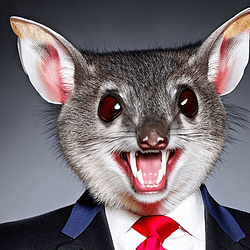Neither. You know how you can look at clouds and see a horse? It’s kind of like that. But with a lot more math.
Heh heh. True, and very funny to boot. Thanks for that…
There’s a huge difference here.
In one case, the end-user supplies the content. The tool (the laser) just processes what the user supplied. (If I buy colored pencils and draw Yoda, it’s not the colored pencil vendor’s infringement case. It would be mine since I supplied the image.)
With Magic Canvas, Glowforge is providing the imagery. Their terms of use tries to push the liability to the user by saying that you won’t do any copyright infringement. However, this really just acknowledges that they are providing content that could contain copyright infringing content.
Making matters worse: The end user may not realize that the content provided by Magic Canvas was infringing on someone’s copyright. For example, someone had posted examples of “selfie” and the software filled in a person’s picture. It’s very possible that the picture is a caricature of a known character or otherwise violating some copyright or trademark.
With “this person does not exist” (a different type of AI but with the same problem). I’ve seen plenty of “completely AI generated people” who look like very well-known celebrities. This happens because the AI was trained on real photos and is trying to combine attributes based on what it learned/memorized.
The legality of using images for training of AI is completely unresolved and will be hashed out by the courts over the next few years.
But as for using that Darth Vader drawing for anything… well, even if it’s not covered by copyright, Darth Vader is a trademark owned by Disney so they would very easily sue you into oblivion. ![]()
The rules around copyright and trademark are very different and apply separately. Disney’s trademarks will never expire (unless they choose to allow them to lapse, which obviously isn’t going to happen).

You can walk down the street and see the same walking the other way. With AI you can even ask for the image of the celebrity and get it, even distorted. I experimented and found such distortions actually resisted. If you ask for Xperson with a monster face, You get Xperson and a monster face.
Or …
Being in the public realm, your rights about images of yourself are much reduced anyway.
One could make a lot of money selling those ![]()
Surprisingly both yes and no, depends on the use (creative vs. editorial and media reach)
I too have been following AI for a number of years. New generations of massively parallel processing combined with generative pattern matching and deep learning algorithms have created some amazing utilities for humankind.
As one who has been watching the AI art movement from its inception, and as a professional designer, I get a bit of a chuckle when I see people complain about it.
It’s not unlike what happened when photography first came on the scene and put portrait painters out of business. It’s another tool. And one that is difficult to truly master if you’re trying to use it professionally to create a specific desired outcome.
One of the more interesting posts I saw recently on Reddit was of an anime artist who was furious that stable diffusion had used some of his images to generate completely unique renderings. As if he has a claim to only be the one who can learn from other people’s images. I specifically asked if he was the one that invented anime and of course he didn’t, he learned by studying other artists. And, that’s all these AIs are doing-- they’re using neural networks, very much like our own brains, to create massive pattern matching tools. Yes, if an AI completely duplicates an image pixel for pixel then I agree, it is wrong, but that rarely if ever happens - and I have never seen it happen.
Everything In Design is derivative and if anyone tells you anything other than that, they are not being truthful. Good designers borrow, great designers steal and that is a quote directly from Steve Jobs. And, Apple has borrowed significantly from great designers like Dieter Rams. Look it up. Rams even said how honored he was to have Apple use his designs as inspiration for their own. And, that’s how confident designers approach the subject.
They explicitly hunted for the problem and found it when an image was included repeatedly in training data.
any memorization that exists in the model is small, rare, and very difficult to accidentally extract.
It appears there’s an easy fix even for that small percentage.
I would totally agree! However, it could be noted that immediately artists started having photography in the back of their heads and started veering away from trying to copy reality which had become the goal before photography showed up and went off in many other directions.
Now we can ask for an image “in the style of” so we are back to chasing artists in those many styles. In portrait artists, running away from reality was less of an option. Instead, they used photography as a base to aid in painting taking less work, much as we are using lasers to cut out shapes that hand saws would be insane to try and even straight cuts would be difficult to do as fast and well.
I think the Star Trek idea of using the prime tools of manufacturing for making art is what is happening and will continue to happen and the fact that it takes a certain insight to do a better job than a robot will continue. The robots will do what they are good at and we will go where they cannot.
This topic was automatically closed 32 days after the last reply. New replies are no longer allowed.
